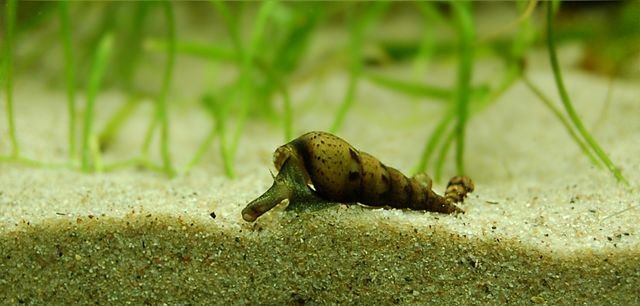
RNA interference (RNAi) has revolutionized gene silencing techniques, playing a pivotal role in genetic function studies and biotechnological applications such as gene therapy, pest control, and silencing genes crucial for crustacean aquaculture.
However, challenges associated with efficient gene silencing in the gonads, especially the ovaries, of arthropods have long perplexed researchers.
In an article published in the journal Aquaculture, scientists from Ben-Gurion University of the Negev revealed an innovative development: the Oocyte-Specific Silencing Chimeric Protein (OSSCot), a tool designed for precise binding and delivery of double-stranded RNA (dsRNA) to crustacean oocytes.
RNAi Mechanism in Invertebrates
In invertebrates, RNAi involves introducing large stretches of double-stranded RNA (dsRNA), exceeding 200 base pairs, to effectively silence specific genes by targeting complementary mRNA. Dicer, an enzyme belonging to the dsRNA-binding protein family, plays a key role in this process by transforming introduced dsRNA into small interfering RNAs (siRNA). These siRNAs associate with the RNA-induced silencing complex (RISC), leading to the fragmentation of the target mRNA and halting genetic translation.
OSSCot: A Molecular Marvel
“In our current study, we present an innovative breakthrough in our long-term program: the Oocyte-Specific Silencing Chimeric Protein (OSSCot),” report the scientists.
OSSCot is a clever fusion of a dsRNA-binding domain derived from a specific Macrobrachium rosenbergii dsRNA-binding protein and a 24-amino acid peptide from the yolk protein, vitellogenin. This unique chimera serves as a key to unlock challenges posed by the intractable nature of crustacean ovaries to traditional gene silencing methods.
In Vitro and In Vivo Success
Meticulous in vitro and in vivo examinations demonstrate the effectiveness of OSSCot. The chimera allows specific entry of dsRNA into crustacean oocytes, marking a significant advancement in targeted gene silencing. Furthermore, OSSCot proves its worth by protecting dsRNA from degradation by endonucleases in the ovary, ensuring the stability of the genetic payload.
Enhanced RNAi Machinery and Impaired Eye Development
The crux of this breakthrough lies in the successful linkage of OSSCot with the specific PAX6-like dsRNA of M. rosenbergii, the master gene for eye development. Injection of this custom combination into the hemolymph of vitellogenic females results in increased expression of the RNAi enzyme machinery. Consequently, embryos of treated females exhibit impaired eye development, validating the practical utility of OSSCot for precise genetic expression manipulation.
Stay Always Informed
Join our communities to instantly receive the most important news, reports, and analysis from the aquaculture industry.
Future Implications
The implications of this research extend beyond M. rosenbergii, as the developed tool holds promise for silencing specific oocyte genes in other crustacean species. Researchers and biotechnologists now have a versatile tool at their disposal, opening avenues to explore genetic function in diverse crustacean organisms and promote biotechnological applications.
With potential applications in basic research and aquaculture, OSSCot emerges as a promising tool to advance our understanding of crustacean genetics and leverage genetic manipulation to enhance crustacean populations in aquaculture environments.
Conclusion
The creation of OSSCot marks a turning point in crustacean biotechnology. This innovative tool not only overcomes historical challenges of gene silencing in crustacean ovaries but also paves the way for a new era of targeted genetic manipulation. The successful incorporation of functional dsRNA into crustacean oocytes foretells a future where the mysteries of genetic function can be unraveled in various species, offering unprecedented opportunities for both research and biotechnological innovation.
The study has been funded by The National Institute for Biotechnology in the Negev (NIBN).
Contact
Isam Khalaila
Avram and Stella Goldstein–Goren Department of Biotechnology Engineering
Ben-Gurion University of the Negev
Beer Sheva 84105, Israel
Email: isam@bgu.ac.il
Reference
Omer Ilouz, Shany Cohen, Isam Khalaila. 2024. A protein chimera for dsRNA binding and delivery into oocytes for large-scale gene silencing in crustacean aquaculture, Aquaculture, Volume 580, Part 1, 2024, 740321, ISSN 0044-8486, https://doi.org/10.1016/j.aquaculture.2023.740321.
Editor at the digital magazine AquaHoy. He holds a degree in Aquaculture Biology from the National University of Santa (UNS) and a Master’s degree in Science and Innovation Management from the Polytechnic University of Valencia, with postgraduate diplomas in Business Innovation and Innovation Management. He possesses extensive experience in the aquaculture and fisheries sector, having led the Fisheries Innovation Unit of the National Program for Innovation in Fisheries and Aquaculture (PNIPA). He has served as a senior consultant in technology watch, an innovation project formulator and advisor, and a lecturer at UNS. He is a member of the Peruvian College of Biologists and was recognized by the World Aquaculture Society (WAS) in 2016 for his contribution to aquaculture.




